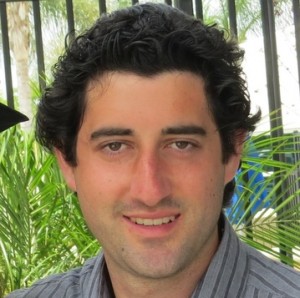 Grad Student Christopher Johnstone is going to be going up to Canada for the 2013 CARO-COMP Joint Scientific Meeting in Montreal, Quebec, Canada (Sept. 18-21, 2013). He will be presenting his recent work titled: “VALIDATION OF IN-HOUSE DOSE CALCULATION SOFTWARE FOR SUPERFICIAL THERAPY”. Christopher also received two travel awards for this conference:
Grad Student Christopher Johnstone is going to be going up to Canada for the 2013 CARO-COMP Joint Scientific Meeting in Montreal, Quebec, Canada (Sept. 18-21, 2013). He will be presenting his recent work titled: “VALIDATION OF IN-HOUSE DOSE CALCULATION SOFTWARE FOR SUPERFICIAL THERAPY”. Christopher also received two travel awards for this conference:
- One $500 SDSU Graduate Student Conference Travel Award (2013)
- One $500 COMP Salsa for Medical Physics Student Travel award (2013)
See below for the abstract.
Abstract:
Purpose: To validate an accurate in-house method (kVDoseCalc) to compute absorbed radiation dose for kilovoltage (kV) superficial x-ray therapy energies.
Materials and Methods: To validate our previously developed in-house kV x-ray dose calculation software (kVDoseCalc) for superficial x-ray therapy, we measured central axis percent depth-doses (PDDs) and profiles using an Xstrahl 150 x-ray system (Gulmay Medical Inc.). We also compared the measured and calculated PDDs to those from the British Journal of Radiology Supplement 25 (BJR25). The Xstrahl source was characterized as a point spectral source with a uniform fluence, and this source model was used in kVDoseCalc to compute absorbed radiation dose at points of interest (POIs). The spectrum was derived by inputting half-value layers (HVLs) and kVps into third party software Spektr and SpekCalc. Doses for the PDDs and profiles were measured using 2, 5, and 15 cm cone sizes at 80, 120, 140, and 150 kVp energies in a scanning water phantom (iba Blue Phantom2) using Scanditronix Wellhofer farmer-type and compact chambers of volumes 0.65 and 0.13 cc, respectively.
Results: The percent difference in the computed PDD doses compared with our measurements range from 0.08% to 4.78% with an overall mean percent difference and standard deviation of 0.28% and 1.72%, respectively. The percent difference between our PDD measurements and those from BJR25 range from 0.38% to 15.7% with an overall mean percent difference and standard deviation of 4.44% and 3.63%, respectively; showing that the measurements agree much better with kVDoseCalc than BJR25. The range in percent difference between kVDoseCalc and measurement for profiles was 0.03% to 4.62% with an overall mean percent difference and standard deviation of 0.88% and 1.28%, respectively.
Conclusions: The results demonstrate that kVDoseCalc can accurately compute absorbed radiation dose for superficial therapy.

